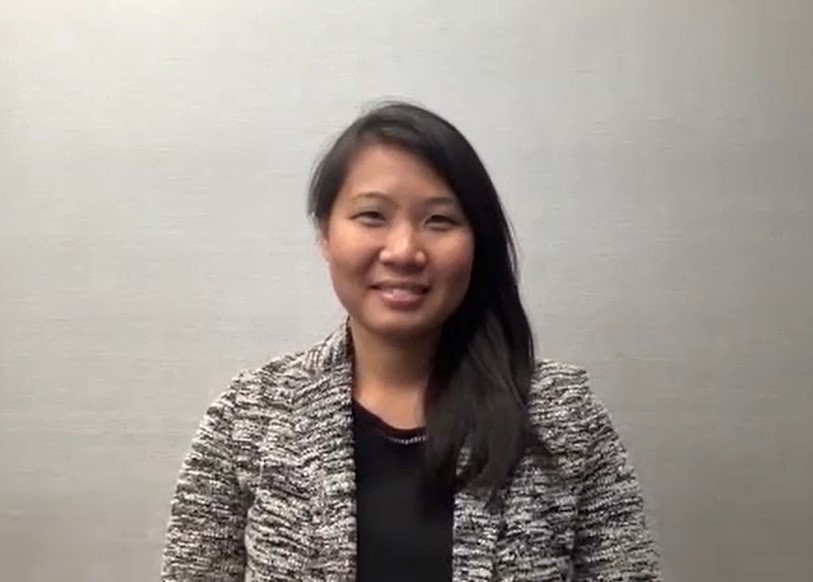August 2023 Article
Tyson Lumbreras MS4, Texas Tech Foster School of Medicine, ACEP AMA-MSS Delegate
Kailey Jacobson, OMS III, Nova Southeastern University Kiran C. Patel College of Osteopathic Medicine, AMA-MSS Alt. Delegate
To many, Chicago is known for their famous deep-dish pizza, but to physicians, residents, and medical students Chicago is home to the yearly American Medical Association Conference where they gather to advocate and deliberate over healthcare policies. During this meeting, the Medical Student Section within the House of Delegates provides an avenue for medical students to advocate on the state and national level for changes in AMA policy. Students are given the opportunity to craft policy resolutions which are then voted on at the MSS caucus and if adopted, they are forwarded on to the house of delegates to be voted on by physicians, residents, and medical student state delegates. One resolution that was adopted by the Medical Student Section at the AMA Interim 2022 meeting in Hawaii was Implementing a National Sexual Assault Nurse Examiner Contact Database, this resolution received a lot of support in Chicago which resulted in being adopted into AMA policy. These advocacy opportunities not only allow medical students to get their voices heard but also help contribute to shaping the future of healthcare on the national level.
Prior to the House of delegates meeting, the medical students convened to vote on MSS authored policies that we collectively deemed high priority items for the House. Given the large number of resolutions forwarded by the MSS this cycle, the medical students arrived in Chicago prepared to hit the ground running by advocating, testifying, and holding meetings behind closed doors to gain support for their policy items. The MSS has traditionally put forward a significant number of policy items each meeting, however this number has been nearly doubled the past few meetings due to the long unpleasant two years of the COVID-19 pandemic. During the pandemic the AMA held meetings virtually which proved to be challenging in regards efficiency, the policy items that were not voted on due to time constraints of virtual meetings were placed into a backlog. As the pandemic eased, in person meetings resumed, the AMA dealt with the lasting effects which included a large backlog of policy items to cover. On a positive note, the AMA has been efficient with their business, backlog policy items are anticipated to be finalized at the November Interim meeting.
Following the MSS meeting, the House of Delegates met to discuss resolutions put forward by state delegations, organizations, and specialty societies including the MSS. Often referred to as the “moral compass” of the AMA, the MSS tends to put forward resolutions focused on social issues impacting their future patients' health. Given the large number of items forwarded by the MSS, the section knew how important it was to vocally advocate to state delegations to gain support. The MSS efforts proved to be successful on many fronts with items being adopted on implementing a national sexual assault nurse examiner contact database, insurance coverage for ground ambulance services, and strengthening supplemental nutrition assistance programs. However, the MSS also faced resistance from the HOD on several contentious issues including resolutions focused on the health-related effects of the US Mexico border wall and protecting patients with medical debt burden which were not supported by the HOD majority vote. These resistances are usually met with the MSS garnering feedback from delegations to assist in the next round of advocacy. The medical student section left Chicago with many advocacy victories that will help lay the foundation for a better healthcare system for our future patients.
After the Medical Student Section has met and voted on policies, we turned to the House of Delegates and the resolutions that have an impact on Emergency Medicine. Specifically, we met with the leaders of ACEP to discuss resolutions and provided updates on the many medical student resolutions at the house. During the HOD many resolutions were debated and adopted as policy but below we have two of particular interest to those in the EM Field, EMS as an essential service, and Coverage for ground ambulance services.
EMS as an essential service
EMS plays a vital role in delivering lifesaving care to patients. At the AMA House of Delegates, testimony was heard to make EMS an essential service of the government. Resolves asked for oversight by physicians with specialized training in medical direction for Emergency Medical Services and federal funding for EMS as an essential service. Approval of this resolution takes us a step closer to providing the services necessary for emergency care and helps to increase the number of EMS professionals with secured funding for EMS services.
Coverage for ground ambulance services
Introduced by the AMA-MSS, “Coverage for Ground Ambulance Services” was well received by both ACEP and the AMA delegation. Recognizing that the cost associated with ambulance rides and the possibility of surprise bills for individuals in need can be a barrier to receiving emergency medical treatment. This resolution seeks to ensure the same set of patient protections that have been instituted for physician, hospital, and air ambulance services are applied to ground ambulances, without modifying the AMA’s other advocacy around the No Surprises Act. As emergency medicine bound medical students, this resolution directly applies to our future patients and seeing it passed is a step towards full insurance coverage for ground ambulance services.
Given the presence of healthcare corporate giants and anti-science advocates, the medical field must no longer treat health policy as an optional pursuit. It is imperative to integrate it into our curriculum and ensure that physicians' voices are represented at the table, advocating for the best interests of their patients. This shift is essential to steer the field of medicine in a patient-centric direction.
To achieve this goal, EMRA has shown its dedication to investing in leadership by participating in the AMA conference alongside the ACEP delegation to review emergency medicine-related policies. Moreover, EMRA is actively investing in the future of the EM workforce by involving medical students in the AMA and providing policy resolution writing opportunities to help direct the field of Emergency Medicine. Both EMRA and the AMA offer valuable avenues for advocating for changes in medicine. Feel free to reach out to us for more opportunities to get involved in this transformative journey.
Related Content



Jul 23, 2019
Program Director Interview Series: University Hospitals Cleveland
This month our Program Director Interview Series is focused on the Midwest. We spoke with Danielle Turner-Lawrence, MD, Program Director at Beaumont Hospital, Royal Oak, about the training opportunities available at this busy Level 1 Trauma Center in eastern Michigan.




